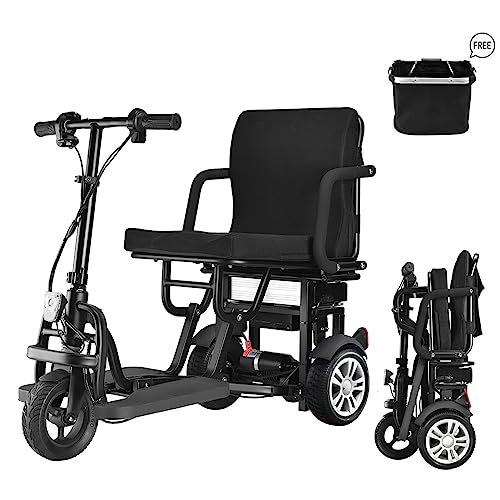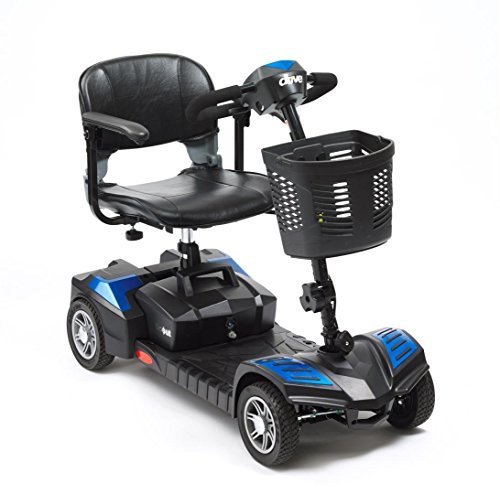Watch Out: How Electric Pedal Scooters Is Gaining Ground, And What Can…
페이지 정보

본문
Two-wheeled vehicle that has pedals that is usually restricted to speeds of 30 MPH or less. Registration, insurance and license required (can vary based on the state).
E-scooters are a fun and environmentally friendly way to travel. They also reduce our dependence on fossil fuels. They are also a great option for those who need some assistance to move for example, people with leg or heart muscle issues.
1. Pedal Assist
Pedal-assist technology allows riders to cruise without exerting constant physical effort. The motor is controlled with the simple press of the throttle. It will provide an amount of support that's suited to the individual, from minimal to maximum. The system is activated by sensors attached to the bike's cranks that detects the rate of pedal rotations (known as cadence) and transmits an alert to the motor controller. The sensor adjusts electric motor power output according to the cadence information to provide a comfortable ride. The rider can manually select the desired level of pedal assistance. The rider is also able to manually select the desired level of pedal assistance.
Depending on the type of electric scooter, there are various levels of assistance. Cadence sensors, the most commonly used, function using magnets that are placed next to the pedals. When the magnet detects rotation it turns on the motor and distributes power to cranks according to the pedaling rate. It is generally an intuitive and smooth system, however some models utilize torque sensors, which can offer a more natural and customizable experience.
Some e-bikes have an engine that is throttled instead of the cadence sensor or torque sensor. These systems are generally more expensive, and the user must press a button located on the handlebars to activate the motor. This system is ideal for those with limited mobility and need motor power, but without having to pedal.
 It is crucial to comprehend these technical specifications in order to make the right decision when choosing an electric scooter. You can gauge the performance by knowing the specifications of electric scooters, such as its power (wattage, voltage), battery capacity, range, speed and suspension systems, brakes carrying mechanisms, and brakes (drum disc, disc or Regenerative). It's not just a matter of being literate, but understanding the terminology will help you make the best electric mobility scooter for adults decision for your lifestyle and requirements.
It is crucial to comprehend these technical specifications in order to make the right decision when choosing an electric scooter. You can gauge the performance by knowing the specifications of electric scooters, such as its power (wattage, voltage), battery capacity, range, speed and suspension systems, brakes carrying mechanisms, and brakes (drum disc, disc or Regenerative). It's not just a matter of being literate, but understanding the terminology will help you make the best electric mobility scooter for adults decision for your lifestyle and requirements.2. Torque Sensor
Torque sensors are utilized in a few electric mobility scooter foldable bikes to gauge the force being pushed on the pedals by the rider. The data is transmitted to the motor controller which then adjusts the power output to match. The motor will provide more assistance to the rider when they exert more effort. The motor can also reduce its power output if the rider has not put in much effort, such as when riding on flat terrain or while in a stop.
Torque sensors work by incorporating strain gauges or other similar technology into the bottom bracket area in which the cranks and pedals are connected to the frame. The sensor measures the movement of the cranks and sends the data to the motor controller which calculates the force is being applied to the pedals. This is a better method to determine the force the rider is pedaling, which lets the motor provide more support.
A torque sensor is able to detect subtler changes in the amount applied to the pedals as compared to the cadence. This creates a more natural feeling and makes the motor seem as if it is an extension of the rider, rather than simply supplying power based on the level of assistance you select.
In contrast the cadence sensor, it relies on magnets and sensors to determine if the crank arm is moving and in the event that it is, the motor turns on to generate power. This could lead to a faster acceleration time, but it does not offer the same natural and smooth feeling that many riders desire.
 A cadence sensor comes with a drawback: it only operates only when the bike is moving. This could be a problem when riding on rough terrain, where the pedals may move with little to no force because of loose dirt or uneven ground. It also means the rider has to wait for the motor's engagement before they can accelerate, which is difficult to do if you're at a stop or going downhill.
A cadence sensor comes with a drawback: it only operates only when the bike is moving. This could be a problem when riding on rough terrain, where the pedals may move with little to no force because of loose dirt or uneven ground. It also means the rider has to wait for the motor's engagement before they can accelerate, which is difficult to do if you're at a stop or going downhill.3. Lean-To-Steer
Whether your child wants to speed up their trip to school or just scoot around the neighborhood, they need to learn how to steer their scooter. Many kick scooters are two-wheeled models that require you to turn the handlebars similarly to turning a bicycle or three-wheeled models that are more sturdy and suitable for preschoolers as well as elementary school kids.
The latter are known as "lean-to-steer" scooters. They work by letting children shift their weight in a specific direction to cause the wheels to move in that direction, much as the skateboard. It may sound strange to adults, however children quickly learn this method. It's also a comfortable option for young children since it eliminates the need to use their hands for steering and makes the journey less demanding.
In addition, a lean to steer system is more stable on uneven surfaces and allows for smooth, gradual turns. It is the ideal scooter for young children who want to ride on sidewalks or roads.
Drobnjak explained that scooters improve gross motor development due to the fact that they strengthen the leg that supports it and hip. This helps with balance and coordination. The propelling leg, on the other hand, builds strength by focusing on quadriceps and the hamstring muscles. Additionally the leaning and weight-shifting skills kids learn from scooting can be applied to other sports and activities such as skating, surfing, and skiing, said Drobnjak.
A good scooter will also have a height-adjustable steering column and a broad range of weight limits, meaning it will grow with your child as they grow. It should be made of sturdy materials that can stand up to wear and tear.
The Micro Maxi scooter is a great example of this kind of equipment. It features a 3 wheeled electric mobility Scooter-wheeled design and lean-to-steer technology. The wheels are designed to glide over bumps and cracks in sidewalks effortlessly, which provides more stability for children as they ride on their scooters. The lean-to-steer system also enables children to adjust their riding on the fly by simply shifting their body weight in a certain direction. This provides them with a more intuitive riding experience that is safer, faster and more enjoyable than traditional scooters.
4. Large Storage
The Large Storage is a useful item that provides additional Tier-2 attachment slots to the Astroneer player's base. It can hold up 24 small objects, and it can be set in horizontal or vertical positions. It can also be set so that two of its slots are angled downwards, making it suitable for Floodlight. Additionally, all inventories across multiple mounted Large Storage modules will unify and work as if they were a single module. It will also provide the power to an RTG or other powered platform it's mounted to as long as it is active. Watch the video below to find out how it works!
- 이전글See What ADHD Assessment Tools For Adults Online Tricks The Celebs Are Using 25.03.30
- 다음글Guide To Link Daftar Gotogel: The Intermediate Guide For Link Daftar Gotogel 25.03.30
댓글목록
등록된 댓글이 없습니다.


 블로그체험단 바로가기
블로그체험단 바로가기